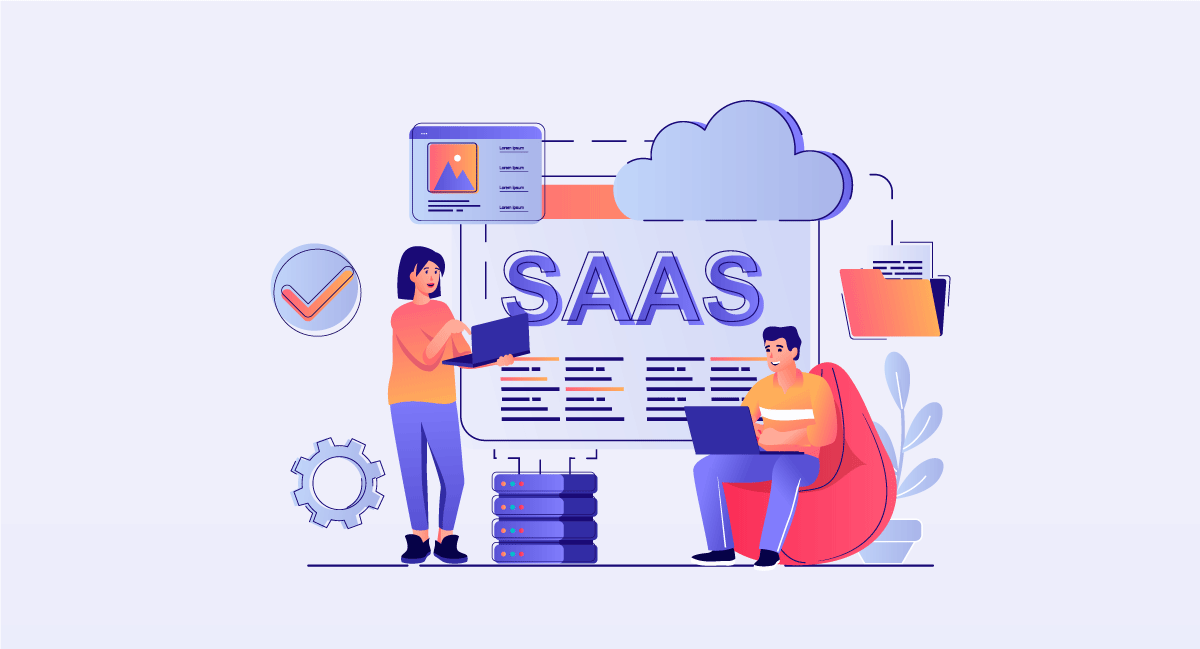Programming as a Help (SaaS) has changed how organizations access and use programming applications. In this article, we will dive into the complexities of SaaS, its advancement, key elements, benefits, models, examination with customary programming, challenges, and future patterns, and that’s only the tip of the iceberg.
Introduction to SaaS
SaaS, an abbreviation for Programming as a Help, alludes to a cloud-based programming dispersion model where applications are facilitated by a third-get-together supplier and made open to clients over the web. This wipes out the requirement for clients to introduce, keep up with, or deal with the product on their gadgets.
Understanding SaaS: Software as a Service
Definition of SaaS
SaaS offers a membership-based model where clients pay a common charge to get to the product using the web. It gives on-request admittance to applications, which are halfway facilitated and overseen by the specialist co-op.
How SaaS works
SaaS applications run on the supplier’s servers, permitting clients to get to them through an internet browser. This model empowers clients to get to the product from any gadget with a web association, giving unrivalled comfort and adaptability.
Evolution of SaaS
Historical background
SaaS has its underlying foundations in the Application Specialist organization (ASP) model, which arose in the last part of the 1990s. In any case, it built up forward momentum with the appearance of distributed computing in the mid-2000s, empowering consistent conveyance of programming over the web.
Growth and adoption
Throughout the long term, SaaS has seen outstanding development, with organizations across different enterprises embracing the model for its expense viability, versatility, and convenience.
Key Features of SaaS
Accessibility
SaaS applications can be gotten to from any place, whenever, for however long there is a web association, empowering remote work and coordinated effort.
Scalability
SaaS permits organizations to scale their product use as per their necessities, with the adaptability to add or eliminate clients and elements as required.
Automatic updates
Suppliers handle programming updates and upkeep, guaranteeing that clients generally approach the most recent highlights and security patches with practically no problem.
Cost-effectiveness
SaaS takes out the requirement for forthright interests in equipment and programming licenses, offering a more reasonable pay-more only as costs arise evaluating the model.
Advantages of SaaS
Flexibility
SaaS applications can be handily tweaked and designed to meet the interesting prerequisites of organizations, considering more prominent adaptability and readiness.
Lower initial costs
The membership-based evaluating model of SaaS decreases forthright expenses, making it available to organizations of all sizes, including new SaaS Companies and SMEs.
Easy integration
SaaS applications can flawlessly coordinate with other programming frameworks and administrations, working with smooth information trade and work process computerization.
Common Examples of SaaS
A few well-known instances of SaaS include:
- Dropbox: A cloud-based record capacity and coordinated effort stage
- Salesforce: A client relationship with the executives (CRM) programming
- Google Work area: A set-up of efficiency instruments including Gmail, Google Drive, and Google Docs
SaaS vs. Traditional Software
Cost Comparison
SaaS ordinarily includes lower forthright expenses contrasted with conventional programming, which requires buying licenses and putting resources into the framework.
Maintenance and updates
With SaaS, suppliers handle upkeep and updates, freeing clients from the weight of overseeing programming establishments and redesigns. also check your shareyoursaas
Customization
While customary programming might offer more customization choices, SaaS gives adequate adaptability to address the issues of most organizations without broad customization.
Challenges and Considerations
Data security
Putting away touchy information in the cloud raises worries about security and protection, requiring vigorous safety efforts and consistency conventions.
Dependence on internet connection
Since SaaS applications depend on web networks, free time or slow web rates can upset activities and efficiency.
Subscription model
The membership-based evaluating model of SaaS implies progressing costs, which might be collected over the long haul and surpass the expense of conventional programming licenses.
Future Trends in SaaS
Artificial Intelligence integration
SaaS suppliers are progressively incorporating computer-based intelligence capacities into their contributions to upgrade mechanization, personalization, and prescient examination.
Enhanced cybersecurity measures
As digital dangers keep on developing, SaaS suppliers are putting resources into cutting-edge safety efforts like encryption, multifaceted validation, and danger recognition.
Industry-specific solutions
SaaS is seeing a shift towards industry-explicit arrangements custom-made to the novel necessities and administrative prerequisites of various areas.
Conclusion
All in all, SaaS has arisen as a unique advantage in the product business, offering unrivalled adaptability, versatility, and cost viability. While it accompanies its arrangement of difficulties, the advantages far offset the downsides, going with it the favoured decision for organizations hoping to smooth out their tasks and remain ahead in the present computerized scene.

